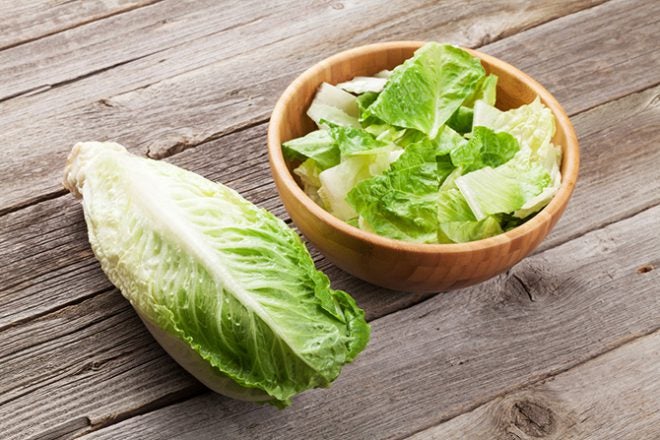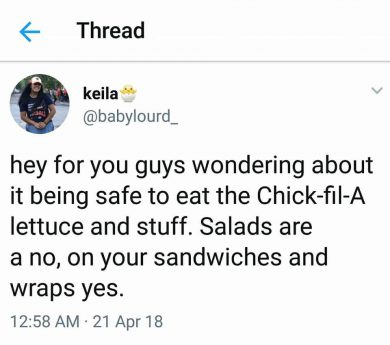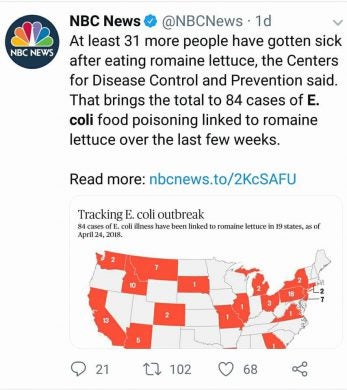Why People Are Getting Sick from E. coli
Rachel 04.27.18

The Center for Disease Control (CDC) revised their finding to show that 84 people in 19 states have become ill and 42 have been hospitalized as a result of E. coli. according to a report on the CDC’s website on Wednesday, affected states include: Alaska, Arizona, California, Colorado, Connecticut, Georgia, Idaho, Illinois, Louisiana, Michigan, Missouri, Montana, New Jersey, New York, Ohio, Pennsylvania, South Dakota, Virginia, and Washington. The largest number of cases so far have been in Pennsylvania, with 18 people reported. California and Idaho also have double-digit sicknesses with 13 and 10 cases reported, respectively.
So what’s causing so many people to get sick? Some sources believe that the influx of pre-packaged, pre-washed greens have a lot to do with the sudden rash of illness. North American consumers enjoy a level of comfort and convenience with ready-made salads. The trade-off for this level of convenience is that the food comes in contact with more people and more machinery in order to get the products to grocery store shelves for purchase.
We’re always going to have these cases, unfortunately, because consumers have gotten used to this product,” said Bill Marler, a prominent food safety lawyer who represents several patients sickened by the lettuce. “The product has risks, in my opinion.
As the majority of those who became ill are women, and statistically women eat more salads than men, this supports the hypothesis that the pre-packaged salads are the primary carrier of E. coli. Many restaurants have been affected by the outbreak, and sales of romaine lettuce have all but ceased.

Leafy greens continue to be a problem, and we’ve looked at leafy greens and fresh produce with concern,” said Robert Tauxe, the director of the CDC division that responds to foodborne illness outbreaks. “Back 15 to 20 years ago, there was a huge concern in food safety around foods of animal origin. … But beginning about 10 years ago, the produce side has become more and more prominent.

How Does the Contamination Start?
Steps have been taken over the past several years in order to better serve the consumers of ‘row-grown’ vegetables like lettuce, broccoli, asparagus, celery, and more. The CDC says that 42% of E. coli cases result from these types of vegetation. Any fresh produce can be a source of concern.
However, the contamination source is not always so cut and dry as to be eliminated easily. Typically, contamination can come from birds flying overhead, flooding of the fields with contaminated water, or farm workers not washing their hands after handling farm equipment exposed to manure.
It’s important to understand that, unlike raw meat or milk, there is no cooking or pasteurization process to kill the bacteria. Leafy greens can harbor pathogens that find their way inside the vegetable and cannot always be killed by a bleach mixture or other measures after the consumer brings the product home.
This is why it’s so important that the people who grow food do everything they can to minimize contamination,” said Sandra Eskin, who heads the food safety project at the Pew Charitable Trusts. “Lettuce grows in the dirt. It’s eaten raw. There’s no opportunity to cook it to kill bacteria.
What can a consumer do to protect themselves against possible E. coli sickness?
According to the CDC, consumers:
- Do not eat or buy romaine lettuce unless you can confirm it is not from the Yuma, Arizona, growing region. Product labels often do not identify growing regions; so, do not eat or buy romaine lettuce if you do not know where it was grown.
- This advice includes whole heads and hearts of romaine, chopped romaine, and salads and salad mixes containing romaine lettuce. If you do not know if the lettuce in a salad mix is romaine, do not eat it.
Similarly, the Center for Disease Control also suggests that restaurants:
- Do not serve or sell any romaine lettuce from the Yuma, Arizona growing region. This includes whole heads and hearts of romaine, chopped romaine, and salads and salad mixes containing romaine lettuce. Restaurants and retailers should ask their suppliers about the source of their romaine lettuce.
In Conclusion
No one seems to be able to offer a solution short of “grow your own and cross your fingers” as of yet. However, with home-grown lettuce (which can be done in pallets, are hearty and resilient against colder temperatures, and don’t require lengthy growth periods) can be an excellent source of healthy greens during times like the E. coli outbreak we’re seeing now.
Taking the time to know where your food comes from, how it’s been handled, and what measures you can take as consumer may not prevent the spread of E. coli, but it can certainly lessen your chances of ingesting it.